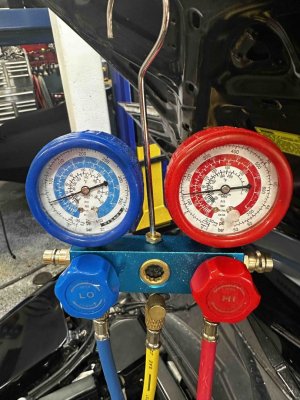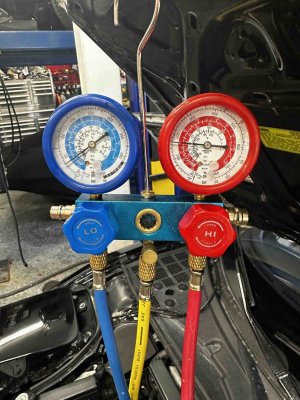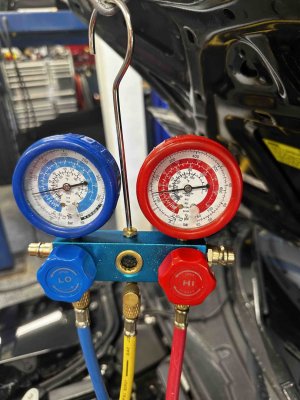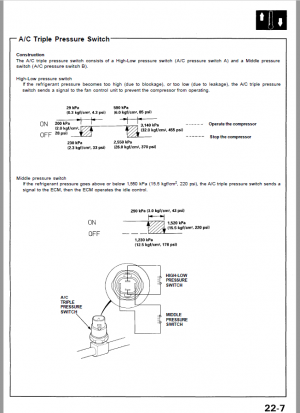Question for the AC pros. Rebuilt climate system on my 91. New Evaporator, new condensers, new dryer, new expansion valve and new compressor. NEW. ;-) I have gauges and a vacuum pump. Held vacuum for 30 minutes, so no leaks afaik.
I added 34oz of R134. Realized almost immediately that BOTH of my condenser fan motors were shot. Replaced them both. Also, CCU has been re-capped and appears to work fine. I may have inadvertently overfilled since I think you use less R134 than r12, right?
When I fire up car and turn on the AC it blows nice and cold for about the first 5 miles of my drive then it goes warm. Any idears? I dont recall the service manual having detailed expected pressures when operating for high and low side...
Found this in another thread, did I overcharge?
Then R-134a
NSX A/C 134a charge weight.
1.9 lb; 0.85 - 0.90kg
28.2 - 30oz
27-28 low side 179-175 high side
If so, how would I pull some refrigerant out... or can I..... Is stopping to cool after a few miles a symptom of overcharging?
Chris.
I added 34oz of R134. Realized almost immediately that BOTH of my condenser fan motors were shot. Replaced them both. Also, CCU has been re-capped and appears to work fine. I may have inadvertently overfilled since I think you use less R134 than r12, right?
When I fire up car and turn on the AC it blows nice and cold for about the first 5 miles of my drive then it goes warm. Any idears? I dont recall the service manual having detailed expected pressures when operating for high and low side...
Found this in another thread, did I overcharge?
Then R-134a
NSX A/C 134a charge weight.
1.9 lb; 0.85 - 0.90kg
28.2 - 30oz
27-28 low side 179-175 high side
If so, how would I pull some refrigerant out... or can I..... Is stopping to cool after a few miles a symptom of overcharging?
Chris.










